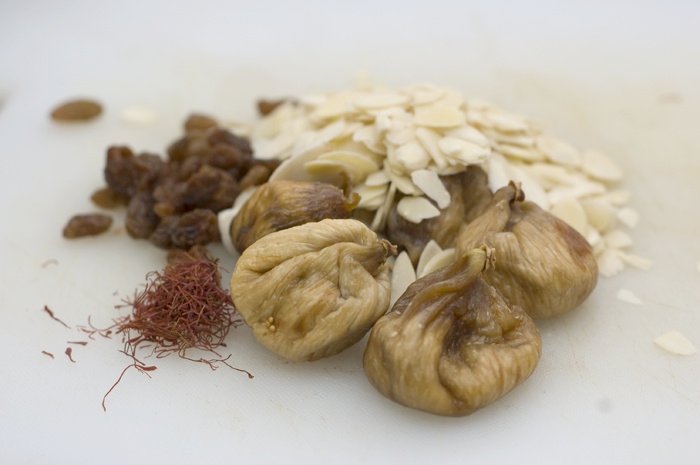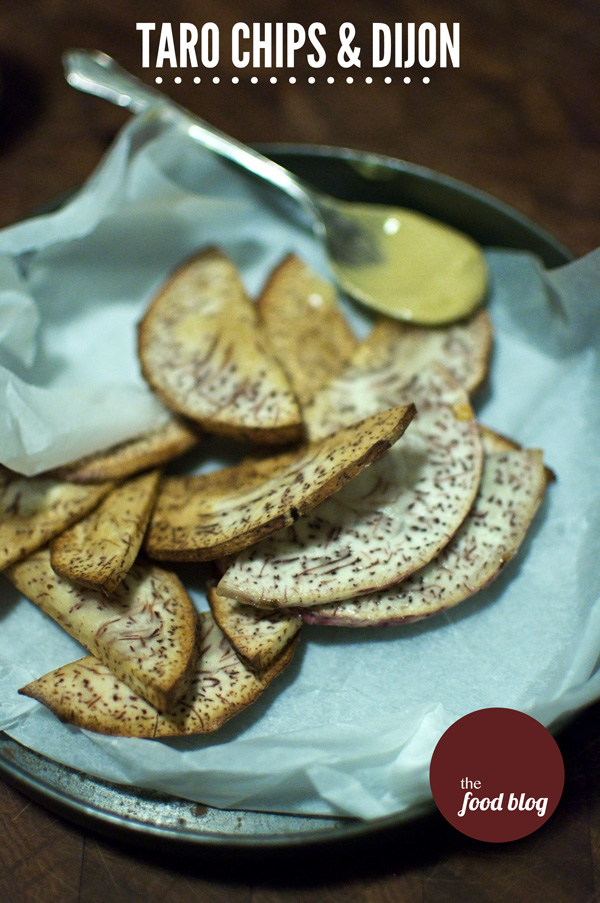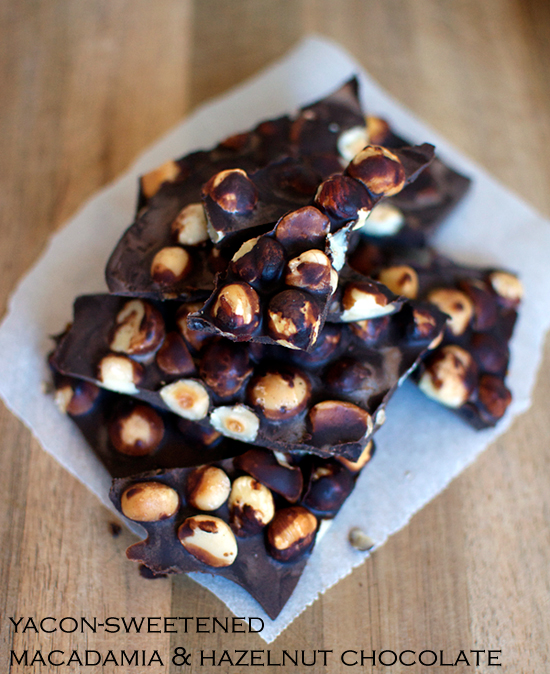
al-sikbaj, the extinct ancestor of escabeche
At school, we learn that Lebanon is a Mediterranean country with an Arab façade. Due to this dual identity, we are taught Phoenician history, and it forms a large part of our self image. Even though the rest of the world may consider Lebanon an Arab nation, many Lebanese consider themselves and their country separate to the Arab world. Our Canaanite ancestry is one we hold on to dearly, and with pride. Our refusal to be labelled as Arabs does not stem from a desire to be non-conforming or dissidence. The Arab label is simply not accurate for us as a people. Genealogically, our ancestry does not trace back to the Arabian Peninsula or the Syrian Desert. Linguistically, our language has more Syriac and Aramaic influences than Arabic. But we are considered Arabs only as a government which has political interest in embracing an Arab identity. That said, our relationship with the Arab world is a close one. We learn the history of the Arabs, of their Golden Age, their sciences and medicine, their poetry and their arts. We are also taught to speak and read Arabic (an illiterate Lebanese will not intuitively understand Arabic), which is our formal written language. This has allowed us to gain a great appreciation for our neighbours and to celebrate their achievements, and in this case, we learn to revel in their culinary contributions.
From before the year 1400 AD, there were more cook books written in Arabic than there were in all the languages of the world combined. Arab food was richer, more sophisticated and more complex (made so by the Arab invasions of Persia) than any of its contemporaries. The cuisine had access to an unbelievable variety of products and produce: delicate, heady flavours of saffron and rose water, the sweetness of cane sugar, honey, date molasses and grape juice, the sharp acidity of vinegar, fresh herbs and dried spices, rich fatty meats and game, fruit and vegetables, sumac, cheese, murri (Arab equivalent of soy sauce), yoghurt, etc… Endless combinations gave way to new dishes, many of which remain in existence to this day, and many other that have disappeared, but whose trace can be seen in dishes kept alive in other forms by other cultures.
One of these dishes is al-sikbaj (pronounced assikbaj, s being a solar letter). One of the most popular Arab dishes of its time, al-sikbaj is mentioned in most medieval Arab cookbooks. The name derives from the Persian sikba: sik, “vinegar”, ba, “food”. And so, the basic premise is that meat is cooked in a mixture of some sort of sweetener (honey, grape juice, date molasses) and vinegar. The interesting thing about al-sikbaj is that it is no longer cooked in the Arab world. Its memory now lives on in the Spanish escabeche. During the Arab invasions of Spain and Portugal, al-sikbaj became part of the local diet. The name was changed due to mispronunciation to escabeche, but the recipe stayed more or less intact. To this day, escabeche denotes a meat that has been cooked in vinegar and something sweet. This dish may have also reached South America and given its name to ceviche (but the scholars have not yet agreed whether this is true or not, with several theories on the subject). However, another interesting word that derives from al-sikbaj is aspic. Since al-sikbaj can be eaten cold, as the cooking liquid cools down, it becomes a jelly, and as such, the word aspic (meat jelly) came to be, as an another alteration of the original word.

the opulence of medieval Arab cookery included rare, exotic, indulgent and expensive ingredients
In my reference books, I have around seven different recipes for al-sikbaj. Medieval cookery books provide challenges in interpreting their recipes. For instance, they do not specify quantities. Often, they ask you to add spices, without telling you which ones to use. Same goes for meat, where you do not know which animal or what cut to use. Cooking times are non-existent, and you are asked to use your judgement in determining when to stop cooking.
When I first cooked this dish, I was overwhelmed with excitement. I felt like a scientist or an archaeologist rediscovering a long forgotten world. And truly, when I tasted the end result, this dish blew me away, exceeding all expectations. The flavours of saffron, dried fruit, almonds and rose water really give you a sense of medieval Arabia. I hope this recipe reaches the thousands of Middle-Eastern chefs out there, and I would love to see al-sikbaj make the remarkable resurrection that it so deserves. So here it goes, my recipe for al-sikbaj, put together after many hours of reading through medieval cook books and attempting to reach the right balance of ingredients.
Al-Sikbaj – Recipe

al-sikbaj, the finished product
Ingredients
600 g lamb shoulder without the bones in 1 inch cubes
3 medium onions, slices
3 medium round eggplants, peeled, quartered then halved, then pricked with a fork
cinnamon, 2 tsp
dried coriander, ground, 4 tsp
apple cider or white wine vinegar, 1/2 cup
honey, 1/2 cup
saffron, a large pinch
5 dried figs, quartered
raisins, handful
almond flakes or halves, handful
rose water, 1 tsp
olive oil
Method
- Boil the eggplants for 15 minutes, covered
- Drain the eggplants and set aside
- Cover the bottom of a heavy based pot with olive oil and heat up
- Brown the meat and onions really well
- Add the cinnamon and coriander and stir for a minute
- Cover the meat with boiling water and add 2 pinches of salt. The water should be around 1 cm over the meat
- Boil the meat on medium heat for 20 minutes, skimming the froth that rises to the surface
- Place the eggplants on top of the meat. Do not stir
- Mix the honey and vinegar. The mixture should be both sharp and sweet
- Pour the honey and vinegar on top of the eggplants
- After 5 minutes take some of the liquid out and mix the saffron with it and pour back on top of the eggplants
- Simmer until the liquid has reduced and thickened, around 45 minutes
- Add the raisins, almonds and figs on top of the eggplants
- Take the heat down to an absolute minimum, clean the sides of the pot with a damp cloth and cover
- Keep cooking for around half an hour
- When done, sprinkle with some rose water and serve
- You can also eat this cold, and it is equally delicious


22 comments
Hi Fouad, I'm so glad I met you at the Foodbloggers' picnic, it led me to checking out your blog and I love it! I've always had a long interest in Lebanese food and other food of the Levant so will be reading with great interest!
well done on the effort. what would the Arabs of old have drunk with this dish, apart from water? or were eating and drinking two separate acitivities, as they are in india today?
my guesses at possible wine pairings:
Chateauneuf du Pape
Negroamaro or Primitivo from Apuglia
Nero d'Avola from Sicily
Grenache from McLaren Vale, Australia
if you happen to try these, let me know.
h
Hi Fouad. I am a Lebanese cook by way of Dallas, TX. So excited to have come across your blog!!
I have enjoyed this enry and bookmarked the recipe. I will definitely give it a try.
How did you get hold of medieval cookbooks? Can you please list which of these did you consult?
Thank you!
Dana-
YaYa – It was great to meet you too, and thanks for checking out my blog :)I'm glad you are enjoying it
Harshal – As you know, most Arabs at tht time would have been Muslims, so they probably would not have appreciated a Chateauneuf du Pape (which I tried and loved at the cellar door in Provence, before I head to Beaume de Venise). Arabs at the time were big on sharbat (the predecessor of sherbet and sorbet) which simply means drinks. These would be iced drinks mixed with a sugary fruit syrup, such as dates. You can try a modern version called Jullab. Mix that with pine nuts and ice, and Bob (or Ahmad) is your uncle.
Dana – thanks for reading. A chef! My plan for the resurrection of al-sikbaj is in motion! I will give you the titles of the books but you have to promise to include this dish on your menu 🙂
Two great books that I recommend are
Medieval Arab Cookery: Papers by Maxime Rodinson and Charles Perry with a Reprint of a Baghdad Cookery Book
and
Medieval Cuisine of the Islamic World: A Concise History with 174 Recipes by Nina Zaouali
Enjoy
Hello Fouad!
Just to tell you we blogged about you here:
http://eusamex.blogspot.com/
cheers
Maya
This is a fascinating post. I have seen many sites my Lebanese, saying that their language is much closer to Aramaic than Arabic, and that they do not really understand the Arabic spoken by other countries in the Middle East who speak Arabic.
Remarkable post ya Fouad! My aunt Claire has met Mr. Rodinson and told me a few anecdotes on him, apparently he was a transvestite. Anyway, I love your photo and presentation of this dish, and can't wait for more to come!
Maya – Thanks!
Aramaic Scholar – have a look at my brother Maroun's website about the Canaanites. This page especially http://canaanite.org/?page_id=14
Joumana – What! HAHAHAHA! I love it! Good book in any case. Thanks for reading 🙂
Great post! I love to see the part of the Phoenician culture mentioned. We know we are not Arabs, we are considered snobs cos we say so, I have even been accused of being ashamed of my "arab origins" to which I responded it would be the case if the Lebanese were arabs. One more info on this subject studies about Phoenician DNA discovered that 21% of it is present only in Lebanon and in Carthage (we know Phoenician Elyssar started it) so this should tell us something.
Kudos on your research, the dish seems interesting but replace lamb with beef for me and lose the eggplant or use artichoke in my case. Recently I cooked something relatively similar but was Cape-Malay. The long simmering just enhances flavors and usually these dishes make great leftovers. It ruins nothing that it has raisins and dried figs these are one of my favorite things to eat!
Hi Viviane
Thanks for your comment.
I completely agree with you. It's not a matter of shame. It's just a matter of facts. My brother Maroun has actually sent his DNA to be tested by National Geographic. The test was anonymous of course. The findings are phenomenal. Have a look at it here:
http://docs.google.com/fileview?id=0B5bBT1uNnfnUZThjYTg3NTItNzVmOS00MDE2LTk5ODUtMWEyMjA4YmRiZmY1&hl=en
Very interesting indeed. I will keep tracking it for more info. Thanks!
Just wanted to let you know that I am making your recipe for al-sikbaj for a medieval feast this weekend. I'll let you know how it turns out!
You are incredibly well read!! It's an enormous pleasure reading your blog.
you seem to resurrect this dish a lot more consummately than you resurrect shakespeare!
I try Amanda, I try…
http://www.ifwtwa.org/scholarship/index.lasso
Are you encouraging me to enter? I thought you didn’t like my body of work
Wow,
This is so great!!!
Such an informative and well written post. I like the way you blend in history, culture and food.
Pity some culinary traditions are lost. I hope you get to write more about this fascinating history.
.-= Gourmantic´s last blog ..Social Media and Travel Foodies: Are We Replicating Shameless Self-Promotion =-.
I haven’t tried mid-west or Arab food, but from the pictures alone, I can really tell it tastes rich and exotic. And yeah, I also love the way you wrote about food and shared the recipe with sufficient historical background.
http://www.mocopan.com.au/
Most interesting, I’m an American of Italian descent, and now living in Panama, and had found your site while looking for a recipe for fish escabeache (sp), I had seen one in a book about Cuba, so here it goes. My wife and I are both foodies and new and different is our game. Will be cking your post out, like I said very interesting. Thanks Bartolo
Great to see this. I’ll go shopping at once. Charles Perry (mentioned above) is a good friend of mine. He wrote food and beverage columnsfor the LA Times for many years, and has other publications.